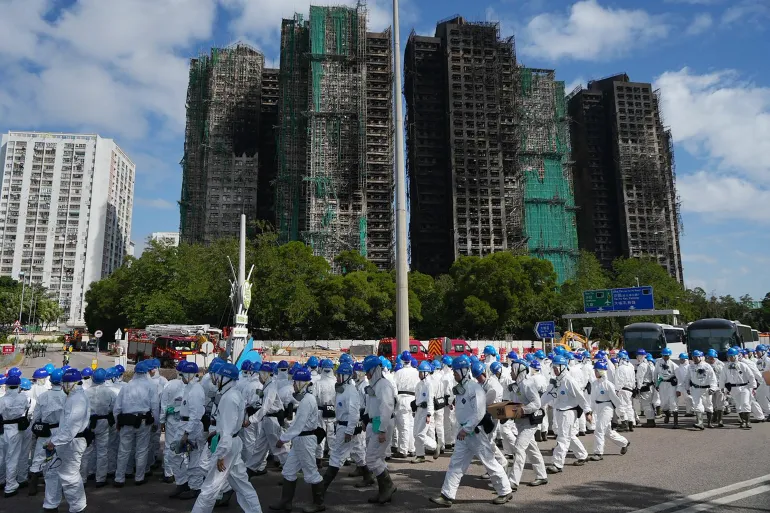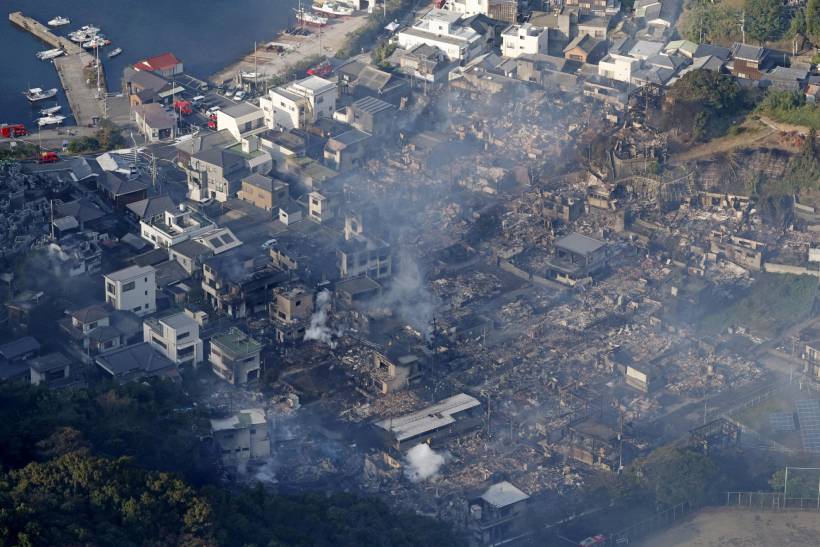Hong Kong mourns victims of blaze as search for remains continues | News
At least 128 people died and 200 remain missing after the towers housing 4,600 people were engulfed by flames.
Published On 29 Nov 2025
People in Hong Kong are mourning the deaths of at least 128 people who died in the region’s largest blaze in decades in an eight-apartment residential complex.
The flags outside the central government offices were lowered to half-mast on Saturday as Hong Kong leader John Lee, other officials and civil servants, all dressed in black, gathered to pay their respects to those lost at the Wang Fuk Court estate since the fire on Wednesday.
Recommended Stories
list of 3 itemsend of list
Condolence books have been set up at 18 points around the former British colony for the public to pay their respects, officials said.
At the site of the residential complex, families and mourners gathered to lay flowers.
By Friday, only 39 of the victims had been identified, leaving families with the morbid task of looking at the photographs of the deceased taken by rescue workers.
The number of victims could still dramatically rise as some 200 people remain missing, with authorities declaring the end of the search for survivors on Friday.
But identification work and search for remains continues, as Lee said the government is setting up a fund with 300 million Hong Kong dollars ($39m) in capital to help the residents.
The local community is also pitching in, with hundreds of volunteers mobilising to help the victims, including by distributing food and other essential items. Some of China’s biggest companies have pledged donations as well.
The Wang Fuk Court fire marks Hong Kong’s deadliest since 1948, when 176 people died in a warehouse blaze.

At least 11 people have been arrested in connection with the tragedy, according to local authorities.
They include two directors and an engineering consultant of the firm identified by the government as doing maintenance on the towers for more than a year, who are accused of manslaughter for using unsafe materials.
The towers, located in the northern district of Tai Po, were undergoing renovations, with the highly flammable bamboo scaffolding and green mesh used to cover the building believed to be a major facilitator of the quick spread of the blaze.
Most of the victims were found in two towers in the complex, with seven of the eight towers suffering extensive damage, including from flammable foam boards used by the maintenance company to seal and protect windows.
The deadly incident has prompted comparisons with the blaze at the Grenfell Tower in London that killed 72 people in 2017, with the fire blamed on flammable cladding on the tower’s exterior, as well as on failings by the government and the construction industry.
“Our hearts go out to all those affected by the horrific fire in Hong Kong,” the Grenfell United survivors’ group said in a short statement on social media.
“To the families, friends and communities, we stand with you. You are not alone.”




